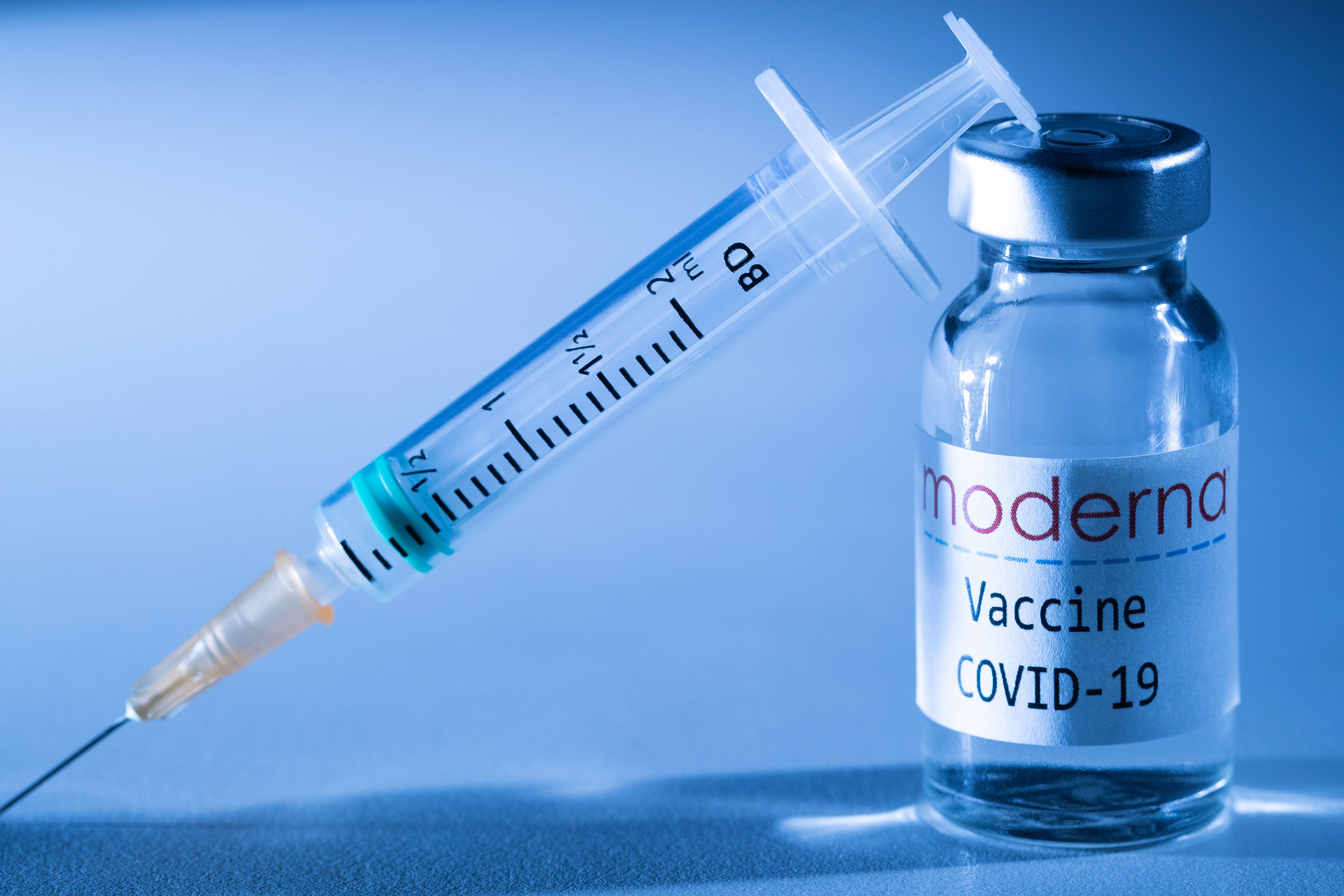U.S. plans to ship 6 million Moderna Covid vaccine doses once FDA gives OK as early as week’s end

This creative image taken in a studio in Paris on November 16, 2020, showing a syringe and a vaccine vial with the reproducted logo of a US biotech firm Moderna, illustrates the announcement of an experimental vaccine against Covid-19 from Moderna that would be nearly 95% effective, marking a second major step forward in the quest to end the Covid-19 pandemic.
Joel Saget | AFP | Getty Images
U.S. officials said Monday they plan to ship just under 6 million doses of Moderna‘s Covid-19 vaccine once the Food and Drug Administration issues an approval for emergency use, which could come as early as Friday.
Medical supply company McKesson will obtain the doses from Moderna for packaging and distribution to 3,285 sites across the country, Gen. Gustave Perna, who oversees logistics for President Donald Trump’s vaccine program Operation Warp Speed, told reporters. FedEx and UPS will be responsible for sending the doses to their final locations, he added. Moderna’s vaccine requires two doses four weeks apart.
The initial shipments of Moderna’s vaccine are more than double the 2.9 million doses the U.S. prepared to ship for Pfizer’s vaccine.
“The difference in quantities was about what was available when we were doing planning for initial delivery,” he said during a press briefing. “As early as 15th [of] November, I snapped the chalk line on what was available to Pfizer so states could do the planning …We wanted them to have enough time as possible to do the planning and realize where they wanted to go first.”
The briefing Monday comes as Americans began receiving some of the first shots of Pfizer’s vaccine. New York’s Northwell Health administered the state’s first vaccine doses just before 9:30 a.m. ET. Sandra Lindsay, a critical care nurse at the Long Island Jewish Medical Center received the first shot, prompting applause from onlookers.
Many states are already working with CVS Health, Walgreens and other local pharmacies to help them expand the availability of vaccines to rural areas and other places, Perna said, adding that the states are overseeing where the doses go.
Initial doses of Pfizer’s vaccine will be limited as manufacturing ramps up with officials predicting it will take months to immunize everyone in the U.S. who wants to be vaccinated. The vaccine is expected to be distributed in phases with the most critical U.S. workers and vulnerable people getting it first. The CDC has provided states with an outline that recommends prioritizing health-care workers and nursing homes first, but states can distribute the vaccine as they see fit.
Moderna’s vaccine could be authorized for emergency use as early as Friday. The FDA’s Vaccines and Related Biological Products Advisory Committee is scheduled to review Moderna’s vaccine on Thursday. The advisory group recommended Pfizer’s vaccine for emergency use last week, and the FDA approved it for emergency use a day later.
Dr. Moncef Slaoui, who is leading Operation Warp Speed, said Monday that U.S. officials expect 20 million Americans to get their first shot of Moderna’s or Pfizer’s vaccine this month. He added that 100 million “vaccine shots in arms” — between the first dose and booster shots — will be administered by the end of February. Some 100 million Americans could be fully vaccinated by the end of March, about a third of the U.S. population, he said.
Like Pfizer, the U.S. will set aside additional doses of Moderna’s vaccine so patients can get their second doses as well as put some in a reserve as a precaution, Perna said. He didn’t’ disclose how much of Moderna’s vaccine would be put in the reserve, but the U.S. set aside 500,000 doses from Pfizer.
Health and Human Services Secretary Alex Azar said the U.S. has to hold back doses to make sure people can get their second dose when the time comes.
Slaoui told reporters last week that the government might be willing to push more Covid vaccine to the public without holding second doses “by the middle of the month of January or early February, when we’ve had five, six weeks of rolling, high-cadence manufacturing, and that we see that things are rolling perfectly.”
“This is about making sure we’re prepared to mitigate situations,” Perna said Wednesday. “As our process matures, both in manufacturing and in distribution, as I said before, the safety stock will go down significantly. Our goal, the guidance I’ve been giving, is vaccine sitting on a shelf is not effective. We have two vaccines that are highly effective and we want to get it to the American people.”




